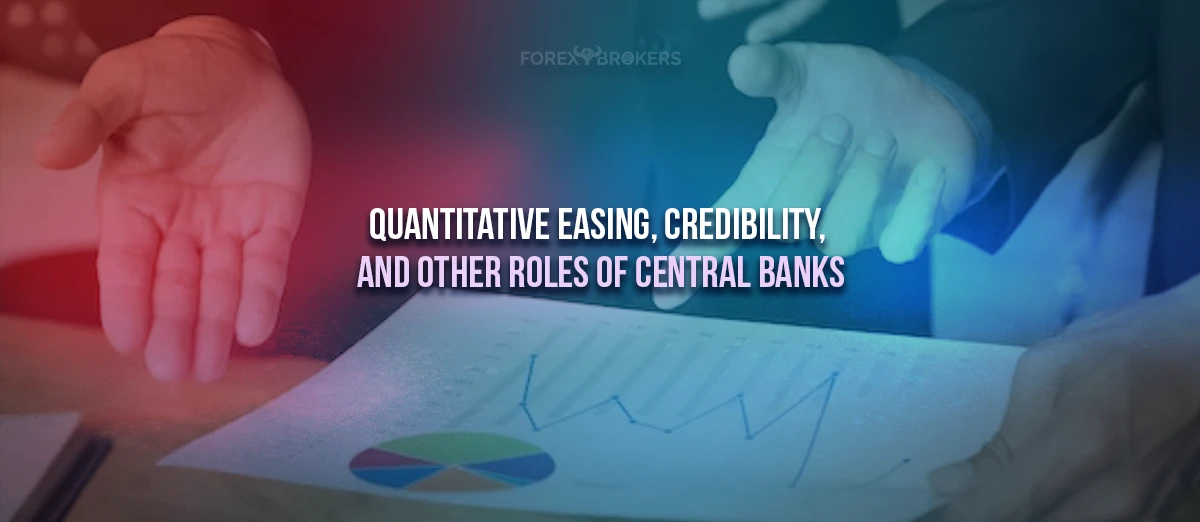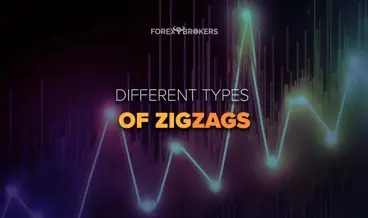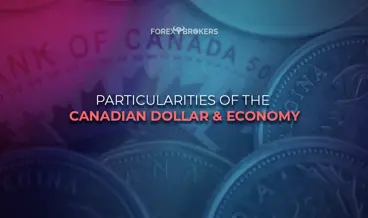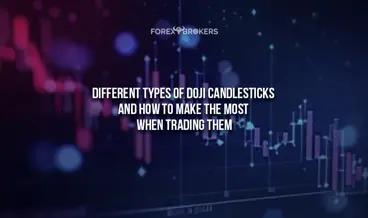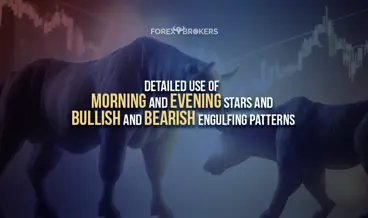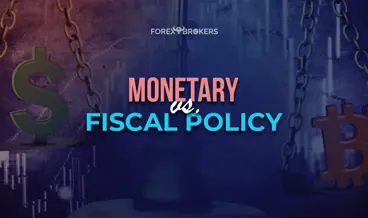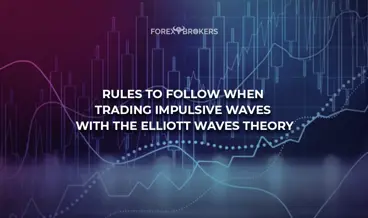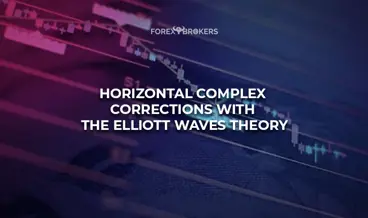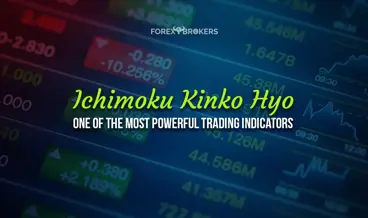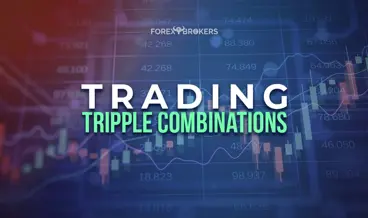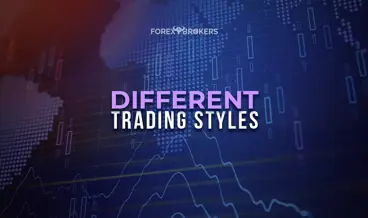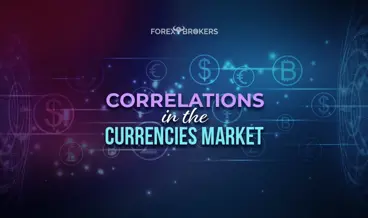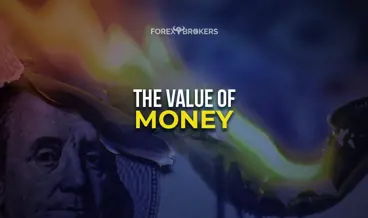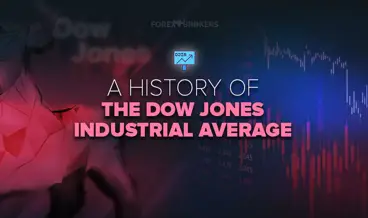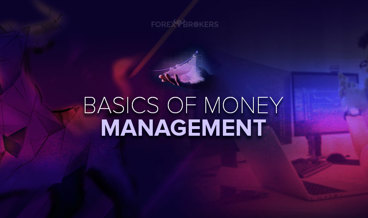Central banks around the world are tasked by their governments to set the monetary policy in their country or, as it is the case in the Euro area, for the entire Eurozone and they take action to fulfill their mandate.
A typical mandate of a central bank in the 21st century is to focus on price stability. Inflation is the single measure used to determine price stability, and all central banks in developed economies target inflation around a certain level – typically 2% or so. Some level of inflation is good for the economy because inflation dropping below 0 is a threat. In that case, deflation appears, which is a much more difficult economic phenomenon to contain.
By targeting inflation at a higher level, central banks give themselves flexibility. They can act when inflation drops below the target but also when it overshoots the target.
Up until the 2008–2009 Great Financial Crisis, central banks used conventional monetary policies to stir the markets and contain inflation. That is, they used the key interest rate to fulfill their price stability mandate. Therefore, when inflation rose above the target, they hiked the interest rate, and conversely, when inflation dropped below the target, they cut the interest rate.
This all went well up to a point when the interest rates were low, and an economic recession started. At that point, central banks could not lower the interest rate any further to respond to low inflation in an economic recession. They needed to improvise, and so unconventional monetary policy was born. Part of it was the phenomenon of buying government bonds with newly created money, known to market participants as quantitative easing.
What Is Quantitative Easing?
Quantitative easing, or simply QE, was first introduced by the most important central bank in the world – the Federal Reserve of the United States – in response to the Great Financial Crisis. The housing crisis, as it was also called, started in the U.S. housing sector and led to the bankruptcy of Lehman Brothers, a famed investment bank.
Fearing the spillover may affect the entire economy and, with it, the global economy, the Fed lowered the federal reserve rate to 0 effective immediately. As seen in the chart below, the rates remained close to their lower boundary for years. All this time, monetary easing continued in the form of unconventional measures such as QE.
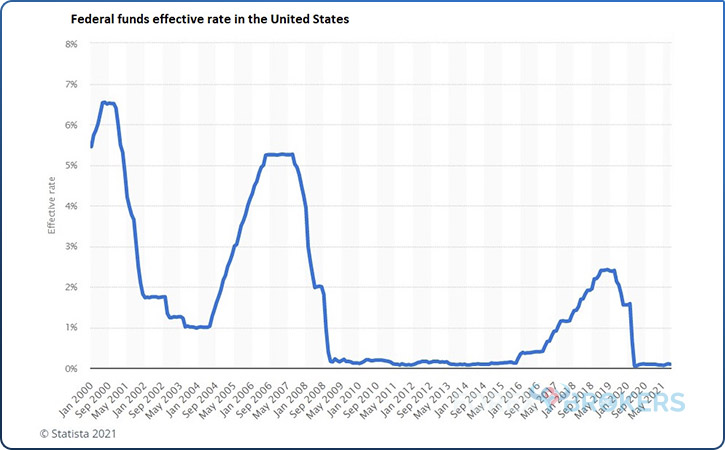
QE is when the central bank uses new money to buy its own government’s bonds or debt. The idea behind the process is that the bonds are bought from private investors (e.g., insurance companies) who don’t want to hold on to the money received and will invest the proceeds in other high-yielding assets, such as stocks.
Another effect is that long-term borrowing rates drop, and thus, the participants in an economy find it attractive to borrow capital and invest in new businesses and projects. In this way, spending is stimulated, and with that, a timid economic recovery starts.
By the time the economy recovers, central banks, in theory, should end the QE via a process called tapering. Tapering represents a reduction in the size of bond-buying. In other words, the easing continues but at a slower pace.
After the QE ends and the economic recovery continues, the central bank may start raising the rates to keep prices stable. As shown in the chart above, the Fed started to raise the interest rate in 2016 after the tapering ended and kept raising it all the way to 2.5% until the COVID-19 pandemic started.
How Does QE Work?
At the time of its introduction, the QE sparked a lot of discussions in the financial community. Never before had it been used, so no one knew the consequences. As the former chair of the Federal Reserve, Ben Bernanke, put it, QE works in practice but not in theory. Therefore, the challenges were huge.
As an unconventional measure, QE was only 1 of the newly introduced policies. Over time, others followed, such as more transparency and forward guidance.
The idea behind QE is based on the inverse relationship between the prices of bonds and their yields. A bond has a price and a yield, which move in opposite directions. As the price of a bond drops, the yield rises, and vice versa – higher bond prices trigger lower yields.
The yield is the borrowing cost, and the lower the yield, the more attractive the conditions are for businesses to get a loan to expand their business or individuals to get a mortgage to buy a house.
It is, therefore, understandable why central banks find QE appealing. By buying government bonds, they hope to boost spending, lower borrowing costs, and bring inflation closer to the target.
Central Banks Begin Buying Bonds
The 1st step in the QE process is, contrary to all expectations, not bond buying but the announcement of the process itself. Financial markets are extremely sensitive to monetary policy decisions, and surprises are not welcomed because they increase volatility. Therefore, any important announcement is telegraphed well before it happens, and as a result, the market reacts well before the actual process of bond buying starts.
After the announcement, the central bank buys bonds and asset-backed securities. In doing so, the prices of these assets rise, just like the price of anything would if there were more buyers than sellers and the buying pressure were poised to persist.
When it buys the bonds, the central bank pays for them with fiat money. Typically, this is electronic money, newly created.
As bond prices increase, interest rates start falling. Lower interest rates (i.e., yields) are attractive to households and businesses and help the economy recover.
Banks Increase Lending
1 direct consequence of the QE process is that, over time, banks increase lending. Moreover, investors start buying more assets because, remember, the interest rates are low.
For instance, households may decide to take out a mortgage, buy a car, or refurbish their house. Alternatively, individuals may simply take out a personal loan to do something new – all these actions contribute to relaunching the economy.
Firms and households borrowing more leads to higher investment and more consumption. If the consumer spends more, economic growth resumes, and thus a recession is avoided. Higher investment and consumption stimulate economic growth, and this completes the circle.
The problem with QE is that it takes time for the central bank’s decisions to have an effect. The transmission mechanism is lengthy, and the effects are not immediate. Therefore, the more quickly the central bank reacts, the less pain society will feel.
QE around the World
The QE was implemented for the 1st time in the aftermath of the Global Financial Crisis 2008 2009. The Fed did more rounds of QE, as it did not know the side effects and had trouble calibrating the programs. Nowadays, QE is just another monetary tool in the toolbox of central banks. Since 2008, major central banks around the world have bought assets close to $25 trillion. In response to the COVID-19 pandemic alone, more than $9 trillion in new QE programs were added.
Below, you can see a QE tracker from the Atlantic Council. The size of a country’s QE is measured by the size of the purchased assets when compared to the country’s gross domestic product (GDP). We see that the Eurozone is leading, with the United States following close behind. While all major central banks added QE to their toolbox, in the rest of this article, we will focus on the actions of some of the biggest central banks, all in advanced economies.
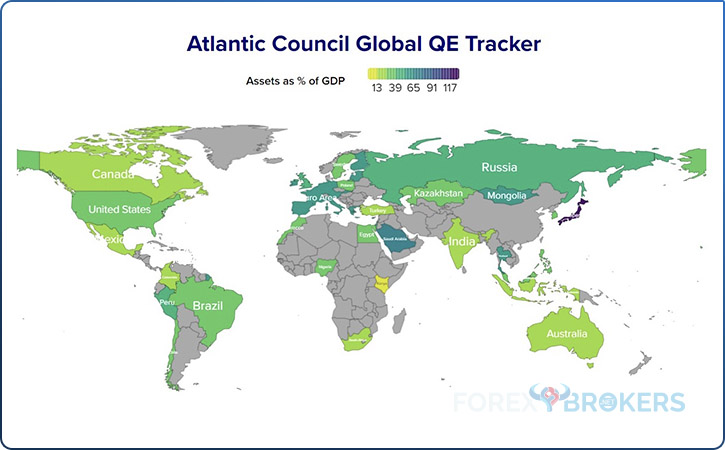
The Big 4 Central Banks
As mentioned earlier, QE was first introduced after the 2008–2009 Great Financial Crisis. After the Fed launched multiple QE programs, the economy recovered. Years later, the Fed started to taper the bond buying and even started selling some bonds that didn’t mature.
1 of the effects of the QE program is that the central banks’ balance sheets increase. This is how much debt a central bank holds, and the amount has continued increasing ever since. The chart below shows the big 4 central banks and their balance sheet expansion via various QE programs before and after the COVID-19 pandemic. Even after the pandemic, the balance sheet held plenty of assets, but the pandemic added $9.1 trillion in extra QE.
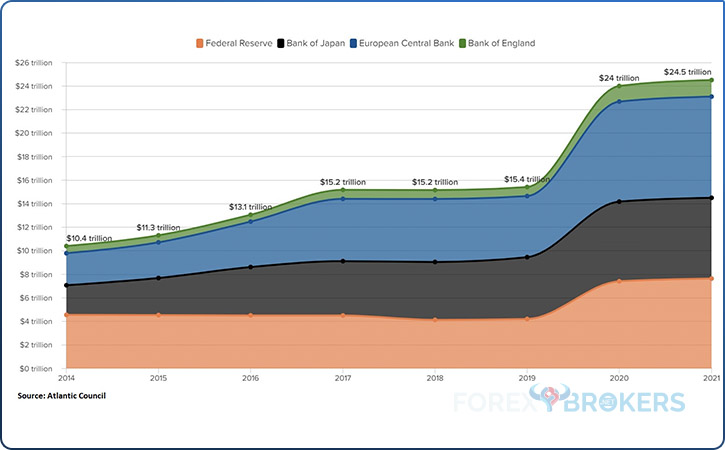
Since the start of 2020 alone, the 4 central banks, as seen above, have increased their balance sheets by 60% cumulative. It is unfortunate for the financial community that we have had 2 global economic crises in such a short interval (the Great Financial Crisis of 2008–2009 and the COVID-19 pandemic in 2020). Because of this short period, we do not know the final stages of QE or what the central banks would have done all these years if these crises had not emerged.
For example, years after the 2008–2009 Great Financial Crisis, central banks slowed, or even stopped, QE. The Fed even unwinded (i.e., sold) some of its purchases. But then, the COVID-19 pandemic started, and they were forced to start the process again – this time even more aggressively. They have put in place the largest-ever QE programs, many of them still running at the time of this writing.
Some central banks were even more aggressive than others. For example, the Bank of Japan and the European Central Bank had lowered their main interest rates below 0 well before the pandemic started. Yet, they had no problem starting new QE programs once the pandemic led to a global economic recession.
In the following section of this article, we will follow the precise responses of the 4 central banks to the 2 global crises, focusing on COVID-19 and QE programs.
Federal Reserve
As mentioned earlier, the Federal Reserve of the United States was the 1st central bank to introduce QE. Because it did not know how to calibrate the process, it needed multiple rounds of QE for the economy to recover from the 2 economic recessions in the last decade.
QE1
During the 2008–2009 Great Financial Crisis, the Fed reacted quickly to the problem in the housing sector. It lowered the federal funds rate close to 0 and started to come up with unconventional measures.
The 1st round of QE was the most difficult one for at least a couple of reasons. First, it was hard to sell the markets on the need for QE and the fact that it would not create inflation. Second, because it was something new, not even the Fed knew its consequences.
Under this round of QE, the Fed began its open-market purchases of longer-term securities, including $1.25 trillion in mortgage-backed securities (MBS). QE1 took approximately 1 year to deploy, and by the time the operation was completed, the S&P 500 index, which is the benchmark for the market, was up significantly from its 2009 lows.
QE2
Shortly after the end of QE1, the Fed started the 2nd round of quantitative easing. Only several months after QE1 ended, the Fed began purchasing longer-term Treasury securities in the amount of $600 billion. QE2 took less time than QE1, but the effect on the S&P 500 index was similar – the index rose for the entire QE2 period.
QE3
The 3rd round of quantitative easing, QE3, started in the last quarter of 2012. Dubbed QE4ever, this round of QE had an open ending. More precisely, the Fed began purchasing MBSs and long-term Treasury securities at $40 billion/month and $45 billion/month, respectively. The threshold for ending the QE was a certain unemployment rate since inflation was still well below the Fed’s target.
QE3 was the longest period of quantitative easing, at least until the COVID-19 pandemic. For 2 years, the Fed injected money into the economy via QE, and the whole time, the S&P 500 index made new all-time highs consistently.
Balance Sheet Normalization
As the economy recovered, the Fed, under the leadership of Janet Yellen, decided it was time to reduce the size of its balance sheet. The normalization, or unwinding, of the Fed’s balance sheet began in 2018 and triggered a drop in the U.S. equity markets.
The Fed started a $10 billion/month reduction of its balance sheet, a pace considered by Janet Yellen to be insignificant and as boring for the markets as watching paint dry. But it wasn’t. A quick correction started, but to the Fed’s merit, the S&P 500 was higher by the time the Fed ended the balance sheet normalization.
The initial plan was to gradually increase the $10 billion/month balance sheet reduction to $50 billion/month, but then the COVID-19 pandemic started. As a new crisis unfolded, the Fed did what it knew it worked – lowering the federal funds rate to 0 and undertaking, once again, QE.
QE4
QE4 is still ongoing at the time of this writing. The Fed returned to QE and injected $1.5 trillion into the economy via repurchase agreements, a form of short-term lending. So, while the 1st 3 rounds of QE were focused on long-term securities, in QE4, the Fed changed its tune and even started to buy some other types of bonds, such as corporate bonds.
The chart below shows the size of the Federal Reserve’s balance sheet since QE measures were introduced from March 2020 to October 2021. Needless to say, the whole time QE was in place, the S&P 500 index made multiple all-time highs, rising to record levels.

The Fed did not stop at QE this time around. It extended its intervention by lending to securities firms through a program called Primary Dealer Credit Facility, by backstopping money market mutual funds through a program called Money Market Mutual Fund Liquidity Facility by expanding its repo operations, and by lending directly to banks.
Temporary relaxing regulatory requirements by lending directly to major corporate employers via a program called the Primary Market Corporate Credit Facility; by lending directly to corporations via a program called Commercial Paper Funding Facility; by supporting loans to small- and mid-sized businesses via a program called Main Street Lending Program; by supporting loans to non-profit institutions; by supporting lending to households, consumers, and small businesses via a program called Term Asset-Backed Securities Loan Facility.
Lending directly to state and municipal governments via a program called Municipal Liquidity Facility; by supporting municipal bond liquidity; by opening international swap lines denominated in U.S. dollars with other central banks; and finally, by offering dollars to central banks that did not have a swap line opened with the Fed via a program called Foreign and International Monetary Authorities (FIMA).
While the paragraph above may be complicated and long, it reflects the true extent of the Fed’s intervention during the pandemic. It went far beyond anything done ever before by the Fed in terms of unconventional monetary policies and certainly more than other central banks around the world had ever done.
Can we say that the Fed saved the financial system during the pandemic? No, but we are safe to assume that without the Fed’s intervention, the economic downturn and its consequences would have been more severe and would have lasted much longer.
European Central Bank
In Europe, the pandemic caught the European Central Bank (ECB) in full easing mode – the key interest rate was negative, and a QE program had been running since December 2018. As such, when the COVID-19 pandemic hit Europe, the ECB was forced to innovate. It launched a new program, the Pandemic Emergency Purchase Program (PEPP), to support European economies.
What is interesting here is that the PEPP complemented the existing QE, and thus the ECB boosted the increase of its balance sheet. Truth be told, the ECB balance sheet increased so much that now it has 1 of the largest balance sheets in the world when compared to the size of the Eurozone’s GDP.
Bank of England
In the United Kingdom, the Bank of England has used QE since 2009. It followed closely in the Fed’s footsteps and bought more bonds every time a new crisis started.
The Bank of England justifies the bond buying as an effort to boost spending in the economy. Moreover, it focuses on high-quality financial assets that it can sell further down the road if the need arises.
Just like in the case of the Federal Reserve, the biggest increase in QE happened during the COVID-19 pandemic. To tackle the negative effects of the pandemic, the Bank of England designed a QE program of almost GBP 900 billion. As a consequence, the size of its balance sheet almost doubled, rising by 90% during the pandemic.
In response to the pandemic, the Bank of England established 3 lending facilities focused on small and medium-sized businesses. However, lending facilities, such as the Term Funding Scheme, account roughly for only 12% of the central bank’s QE operations.
Price stability is the cornerstone of the Bank of England’s mandate, and the typical tool it uses to fulfill its mandate is manipulating the key interest rate. The Bank of England lowered the interest rate to 0.1% during the pandemic – a record low. Moreover, it announced that it had studied the benefits of lowering the key interest rate into negative territory but never did lower it into negative territory.
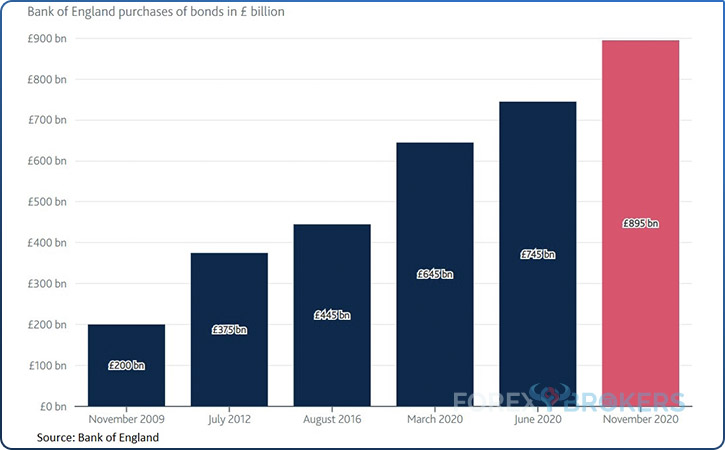
Bank of Japan
The Bank of Japan is 1 of the pioneers of unconventional monetary policies. The Japanese economy was gripped by decades of low inflation and even deflation, thus forcing the central bank to keep the monetary policy ultra-loose.
When the COVID-19 pandemic hit, the Bank of Japan reacted by doubling the pace of its QE program and committing close to $900 billion to support market functioning. As a result, the central bank’s balance sheet has expanded by about 25% since the pandemic started in 2020.
If we compare the size of the QE package in Japan with the size of the Japanese economy, then the Bank of Japan was the most aggressive central bank in the developed world in terms of expanding its asset purchases.
1 of the aims of the central bank during the pandemic was to provide support to the economy by offering lending facilities. It did so with 2 lending facilities, designed to stabilize repo markets and to support corporate lending. However, just like in the Bank of England’s case, the lending facilities account for only a small portion of the QE – about 18%.
The bulk of the QE is made of outright security purchases and Japanese government securities. As for the key interest rate used for price stability, the Bank of Japan lowered it to -0.1% and has not raised it as of this writing. However, the rate applies only to some specific commercial bank deposits, and the aim was to create inflation.
Tapering Asset Purchases
Financial markets all over the world reacted positively to the various rounds of QE. Because investors do not want to hold their money in cash, they look for alternatives. The stock market is the favored destination, and it has now been proven that QE leads to higher asset prices and, thus, higher stock market prices.
As a result, the stock market quickly recovered from the declines during the 2008–2009 Great Financial Crisis. But when the Fed announced the tapering of asset purchases (i.e., slowing down the pace of bond-buying), the stock market declined sharply.
A so-called “taper tantrum” took place, and the Fed quickly reversed course. We might say that the market forced the Fed’s hand, showing the Fed what could happen if the stimulus were reduced.
Fast forward to the present times, and the Federal Reserve has again announced the tapering of its asset purchases in response to the COVID-19 pandemic. However, instead of a sharp market selloff, the stock market reacted by making new highs.
The explanation is that the Fed guided the markets all the way to the tapering announcement, so there was no surprise whatsoever. Forward guidance worked, so the tapering did not trigger a tantrum like the last time.
Credibility Issues
A central bank has multiple other roles, not only to maintain price stability. Price stability is part of every central bank’s mandate, but a typical central bank has other roles as well.
For example, a central bank is the bank of the government and bankers. It literally can print money to supply commercial banks, so it acts as a last-resort lender.
Additionally, central banks have regulatory and supervisory roles in the payments system. They regulate and set standards for the system and coordinate payments.
However, out of all the roles of a central bank, maintaining price stability is the most important one – and the one that matters the most for traders and investors. This is because an independent and credible central bank is key to society, and the QE programs mentioned in this article raise some credibility issues, such as inflation overshooting the target and artificially inflated asset prices.
Inflation Overshooting the Target
A consensus exists among central banks that certain levels of inflation are beneficial to economic growth. This is why the price stability mandate is not centered around the 0% level but around 2%. Each central bank has its own definition of price stability. Some see their mandate fulfilled by keeping inflation below, but close to, 2%, as is the case with the European Central Bank. Some others fulfill theirs by keeping inflation within a range of 1–3%, and so on.
The aggressiveness of QE and extreme fiscal easing to tackle the effects of the COVID-19 pandemic have led to rising inflation. In the beginning, the rise was modest because, remember, inflation was subdued prior to the pandemic. But soon, it started to exceed the targets of central banks.
Some banks, such as the Fed, prepared the markets for inflation. For example, in August 2020, only a few months after COVID-19 was declared a pandemic, the Federal Reserve changed its definition of price stability from the classic 2% to “averaging 2%.” The new definition, called average inflation targeting, was controversial because the Fed did not mention the period over which it would measure “average inflation.” It still has not mentioned this as of this writing. So, by letting inflation overshoot the target and not specifying the period for calculating the average, the Fed has raised some credibility issues among market participants.
Furthermore, economists give the benefit of the doubt to central banks when they argue that overshooting inflation as a result of excessive monetary and fiscal policy easing is transitory. However, the inflation is showing no signs of cooling down, and even the most frantic supporters of the “transitory” team are having their doubts.
Only time will tell if the inflation comes back below the target or not because, remember, the long-term effects of quantitative easing are unknown. As such, central banks are walking a thin line and are at risk of losing 1 of their most important assets – their credibility.
Artificially Inflated Asset Prices
Another issue comes from artificially inflated prices. Throughout this article, we have mentioned that every period of QE has led to rising stock market prices. Therefore, the big question is whether the stock market still would have made gains if the Fed had not run its various QE programs.
Once again, we do not know the answer to this question, but we do know 1 thing: the link between QE and higher asset prices is undeniable, and thus it leads to the impression that asset prices are artificially inflated.
Limitations of Monetary Policy
Above, we have discussed central banks’ credibility, but we should also mention the limitations of monetary policy. With their actions, central banks try to influence the quantity of money in an economy. In other words, they try to manipulate the supply of money in such a way to influence the real economy.
That is all nice and well, with 1 exception – a central bank cannot control the amount of money households and businesses put in banks on deposit. What they can do, however, is make these deposits unattractive by keeping the interest rates lower for longer or even making them negative, thus making it harder for people to save money. But ultimately, no one is forced to spend.
In other words, there are some limits to monetary policy. Also, one should not forget that central banks are just special banks, and there are still certain risks of accumulating assets that might create losses. In theory, central banks can purchase any assets as long as they have approval from their government. The key is to find the right balance between balance sheet expansion and economic growth. Jumping on QE is easy, as there are now precedents in place. But there is no precedent (yet) as to how to unwind the balance sheet expansion. The last time the Fed tried to, the stock market reacted promptly.
Problems in the Monetary Transmission Mechanism
Another limitation of monetary policy comes from the monetary transmission mechanism – more precisely, the process through which the interest rate change is transmitted through the economy.
After the central bank announces a change to the official key interest rate, the policy begins to work through the economy via numerous channels, such as the expectations and confidence of market participants, asset prices, market rates, and, finally, the exchange rate. However, this is a lengthy process that may take several months, so if the central bank does not take a proactive stance, the risk is that the economy will suffer until the effects of the monetary policy change take place.
Conclusion
Quantitative easing is the process of central banks adding money directly into the economy. The aim is to lower long-term borrowing costs and to support job creation.
It goes like this – central banks print money to buy long-term financial assets, typically but not solely government bonds. They hold these securities on their balance sheet, and when the economy is doing better, the plan is to unwind these securities by selling them.
We may say that quantitative easing worked as planned because the U.S. economy, the largest in the world, recovered quickly from the 2 economic recessions in the last decade. In fact, we may say that the Fed knew exactly what to do when the COVID-19 pandemic led to another economic recession. Armed with the experience it had from the 2008–2009 Great Financial Crisis, it immediately engaged in QE, a move followed by all major central banks in the world.
Nowadays, QE has become just another tool in the toolbox of central banks. Now, when future crises unfold, central banks know that QE is here to help. There is no doubt that central banks will continue to innovate, as they did after both of the last 2 recessions. However, no other unconventional measure has proven to be as successful in restoring economic growth as QE has. After all, the COVID-19-led economic recession was the shortest in history, mostly because central banks engaged immediately in QE.
